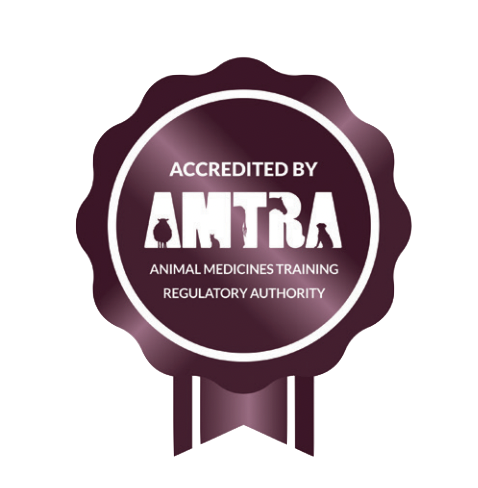
Is there a ‘beta’ way to understanding ‘omegas’?
By Sami Hodgson BSc (Hons), MSc (Hons), AFHEA, nutrition and customer service advisor at Science Supplements.

AMTRA is required by the Veterinary Medicines Regulations to ensure its RAMAs/SQPs undertake CPD. All RAMAs/SQPs must earn a certain number of CPD points in a given period of time in order to retain their qualification. RAMAs/SQPs who read this feature and submit correct answers to the questions below will receive two CPD points. For more about AMTRA and becoming a RAMA/SQP, visit www.amtra.org.uk
You will definitely have heard of omega-3s, but how might these be relevant to our equines, and are they effective?
The term ‘essential fatty acid’ describes a group of compounds that are:
- Essential – they cannot be synthesised by the body and are required for essential biological processes, so must be consumed via the diet
- Fatty – a fat, but not a fat that is solely used as an energy source
- Acid – they contain a carboxyl group (-COOH) at one end of the chain and a methyl group (CH3) at the other (functionally speaking, an acid, but typically weak)
Essential fatty acids can be further distinguished as either omega-3 or omega-6. The ‘3’ and the ‘6’ simply describe the position of a double bond from the methyl end of the acid. This end of the fatty acid is the most stable, and while seemingly very similar, the location of these bonds relate huge differences in their biochemical properties and nutritional significance.
BIOLOGICAL SIGNIFICANCE, IN A NUTSHELL
The outer membranes of cells are made up of phospholipids, which each contain two fatty acids. When signals request the release of these fatty acids, they are processed/modified to produce eicosanoids. The transformation of these fatty acids into eicosanoids is one of the most significant pathways of action, because eicosanoids are signalling molecules that have variable effects based on their predecessor, and the net action of these eicosanoids will therefore be heavily influenced by the proportion and type of fatty acids that created them.
Eicosanoids are compounds that regulate homeostatic and inflammatory processes. Many equine owners will be familiar with non-steroidal anti-inflammatory drugs (NSAIDs) - when their horse is prescribed ‘bute’, and they go home to take some ibuprofen to help with the headache of worrying over said horse. These are both examples of using NSAIDs.
They are a common strategy for impacting this eicosanoid process, as they inhibit the actions of certain eicosanoids during inflammation. The effectiveness and popularity of these drugs is an example of the significance of understanding this pathway, and the impact of moderating it.
OMEGA-3 VERSUS OMEGA-6
Both omega-3 and omega-6 compounds exist in variable iterations, however some of the most relevant and biologically significant are:
- Omega-6s: Linoleic acid (LA) can be converted to -> arachidonic acid (AA)
- Omega-3s: Alpha-linolenic acid (ALA) can be converted to -> eicosapentaenoic acid (EPA) and then -> docosahexaenoic acid (DHA)
Arguably, these converted versions (EPA, DHA, AA) are the most biologically active. The fatty acid AA is in itself essential, but the eicosanoids and other resultant compounds have proinflammatory effects that have been associated with conditions such as rheumatoid arthritis, psoriasis, thrombus formation associated with heart attacks, and gastrointestinal disorders. By contrast, EPA and DHA result in eicosanoids and other resultant compounds that are anti-inflammatory in action.
ALA (O-3) and LA (O-6) share the same systems that metabolise them, as well as absorption channels, which means that both the ingested quantity and proportion are relevant. Theoretically, this means that promoting conversion of ALA into EPA and DHA would be achieved by a lower LA:ALA ratio, but in trials this has been significantly less effective than direct consumption of EPA and DHA, which removes a considerable amount of dependency on this ratio.
In humans, the conversion rate of ALA has also been shown to be poor. Increasing EPA and DHA consumption will therefore not only fuel an anti-inflammatory pathway, but also result in the decreased availability of AA to be converted, and inhibit its conversion efficiency into proinflammatory eicosanoids.
The relationship between eicosanoids and their fatty acid mediators is among the most complex and challenging pathways to map in a physiological context, so a gross simplification is needed to summarise this relationship. Simply speaking, omega-3 fatty acids are nutritionally functional because their increased abundance and action modifies inflammatory signalling pathways.
Both humans and horses have experienced significant nutritional changes in the time since the industrial revolution, and believe it or not, this has a lot to do with the benefits of focusing on omega-3 fatty acids.
We now consume more omega-6 fatty acids; in the past 100 years, our consumption of LA has doubled, and there is much suspicion that a variety of diseases are related to this. Examples of foods high in omega-6 fatty acids include safflower (cooking oil), sunflower, corn and soybean, whereas omega-3 fatty acids are most commonly high in oily fish and other marine sources (as algae is a primary source of EPA and DHA, its typically found in food chains related to it), though it’s also found in chia seeds and flaxseeds (linseed) in ALA form.
THE BENEFITS
In 1975, fatty acid composition was compared between Greenland Eskimos, and people living in Denmark. Significantly lower LA and higher EPA levels were recorded in Greenland Eskimos, with omega-3 fatty acids being responsible for them having healthier blood pressure and arteries, and a low rate of heart disease despite eating a high fat diet.
Research has developed significantly since, and found wide ranging benefits extending to not only cardiac health, but neurological, metabolic, anti-cancer, tissue repair, joint, and auto- immune diseases. Because of their anti-inflammatory effect, they are clearly supportive where symptoms are related to inflammatory reactions.
The studied benefits in horses relate clearly to inflammatory modulation, and therefore may be helpful when considering a range of conditions, such as osteoarthritis, equine metabolic syndrome (EMS), laminitis and respiratory diseases, among others.
The further benefits that have been well established in human literature provide a good basis for further understanding of applications with equines, and may hint at a litany of benefits not yet fully established in research. There are certainly suggestions of benefits that also extend to the health of breeding stock, high performance horses and skin conditions.
EQUINE RESEARCH
- Osteoarthritis: EPA and DHA supplementation has been shown to similarly accumulate over time through supplementation, and to result in improved markers of arthritic joint health. There is compelling research demonstrating the net effect of in vitro modulation of the synovial inflammatory response in equines, and a clear, substantiated basis for nutritional support as a prevention or treatment of osteoarthritis.
- Metabolic health: In an oral sugar test, horses with EMS that had been supplemented with DHA for 46 days did not have an increased insulin response, compared to control horses that did, exemplifying preliminary data to support a role in modulating metabolic parameters in diagnosed horses. Other research has also shown DHA supplementation to result in significantly lower baseline insulin and glucose concentrations, and improved insulin:glucose ratio.
- Respiratory health: In a pilot study of horses with inflammatory airway disease (IAD) and recurrent airway obstruction (RAD), DHA supplementation was associated with clinical improvements in cough scoring, lung function, and cytology. On the basis of current research and inflammatory modulation, supplementation is included in the American College of Veterinary Internal Medicine’s (ACVIM) revised consensus statement for IAD in horses. It has also been suggested as worthy of exploration in regards to supporting against exercise- induced pulmonary haemorrhage.
THE TAKEAWAY MESSAGES?
- There is a solid foundation of documented benefits to supplementing omega-3s EPA and DHA in equines.
- Sources of omega-3s based on ALA (such as in linseed), cannot be relied on for these benefits due to poor conversion (products stating high in generalised omega-3 does not equal effective)
- Supplementation has the potential to be particularly impactful in equines who are suspected of having, or have been diagnosed with osteoarthritis (or other orthopaedic conditions where inflammation is a factor), equine metabolic syndrome, history of laminitis, and a range of respiratory diseases or respiratory challenge
Research in humans hints at far more benefits beyond that, with more research in this area certainly warranted

ABOUT ETN’S RAMA/SQP FEATURES
ETN’s series of CPD features helps RAMAs (Registered Animal Medicines Advisors/SQPs) earn the CPD (continuing professional development) points they need. The features are accredited by AMTRA, and highlight some of the most important subject areas for RAMAs/ SQPs specialising in equine and companion animal medicine.
AMTRA is required by the Veterinary Medicines Regulations to ensure its RAMAs/SQPs undertake CPD. All RAMAs/SQPs must earn a certain number of CPD points in a given period of time in order to retain their qualification. RAMAs/SQPs who read this feature and submit correct answers to the questions below will receive two CPD points. For more about AMTRA and becoming a RAMA/SQP, visit www.amtra.org.uk
References:
- Brennan, K.M., Graugnard, D.E., Spry, M.L., Brewster-Barnes, T., Smith, A.C., Schaeffer, R.E. and Urschel, K.L., 2015. Effects of a docosahexaenoic acid–rich microalgae nutritional product on insulin sensitivity after prolonged dexamethasone treatment in healthy mature horses. American journal of veterinary research, 76(10), pp.889-896.
- Buckley, J.D., Burgess, S., Murphy, K.J. and Howe, P.R., 2009. DHA-rich fish oil lowers heart rate during submaximal exercise in elite Australian Rules footballers. Journal of Science and Medicine in Sport, 12(4), pp.503-507.
- Caron, J.P., Gandy, J.C., Brown, J.L. and Sordillo, L.M., 2019. Omega-3 fatty acids and docosahexaenoic acid oxymetabolites modulate the inflammatory response of equine recombinant interleukin1β-stimulated equine synoviocytes. Prostaglandins & other lipid mediators, 142, pp.1-8.
- Christmann, U., Hancock, C.L., Poole, C.M., Emery, A.L., Poovey, J.R., Hagg, C., Mattson, E.A., Scarborough, J.J., Christopher, J.S., Dixon, A.T. and Craney, D.J., 2021. Dynamics of DHA and EPA supplementation: incorporation into equine plasma, synovial fluid, and surfactant glycerophosphocholines. Metabolomics, 17(5), pp.1-10.
- Couëtil, L., Cardwell, J., Gerber, V., Lavoie, J.-P., Léguillette, R. and Richard, E. (2016), Inflammatory Airway Disease of Horses—Revised Consensus Statement. J Vet Intern Med, 30: 503-515. https://doi.org/10.1111/jvim.13824
- Dennis, E. A., & Norris, P. C. (2015). Eicosanoid storm in infection and inflammation. Nature reviews. Immunology, 15(8), 511–523. https://doi.org/10.1038/nri3859
- Dunnett, C.E. and Vervuert, I., 2010. Functional nutritional ingredients: science behind the claims for health. The impact of nutrition on the health and welfare of horses. EAAP publication, 128, pp.241-255.
- Elzinga, S.E., Betancourt, A., Stewart, J.C., Altman, M.H., Barker, V.D., Muholland, M., Bailey, S., Brennan, K.M. and Adams, A.A., 2019. Effects of Docosahexaenoic Acid–Rich Microalgae Supplementation on Metabolic and Inflammatory Parameters in Horses With Equine Metabolic Syndrome. Journal of equine veterinary science, 83, p.102811.
- Hashimoto, M. and Hossain, S., 2018. Fatty acids: from membrane ingredients to signaling molecules. In Biochemistry and Health Benefits of Fatty Acids. IntechOpen.
- J Dyerberg, H O Bang, N Hjørne, Fatty acid composition of the plasma lipids in Greenland Eskimos, The American Journal of Clinical Nutrition, Volume 28, Issue 9, September 1975, Pages 958–966,
- Kaur, N., Chugh, V., & Gupta, A. K. (2014). Essential fatty acids as functional components of foods- a review. Journal of food science and technology, 51(10), 2289–2303. https://doi.org/10.1007/s13197-012-0677-0
- Manhart, D.R., Scott, B.D., Gibbs, P.G., Coverdale, J.A., Eller, E.M., Honnas, C.M. and Hood, D.M., 2009. Markers of inflammation in arthritic horses fed omega-3 fatty acids. The Professional Animal Scientist, 25(2), pp.155-160.
- Nogradi, N., Couetil, L.L., Messick, J., Stochelski, M.A. and Burgess, J.R., 2015. Omega‐3 fatty acid supplementation provides an additional benefit to a low‐dust diet in the management of horses with chronic lower airway inflammatory disease. Journal of veterinary internal medicine, 29(1), pp.299-306.










